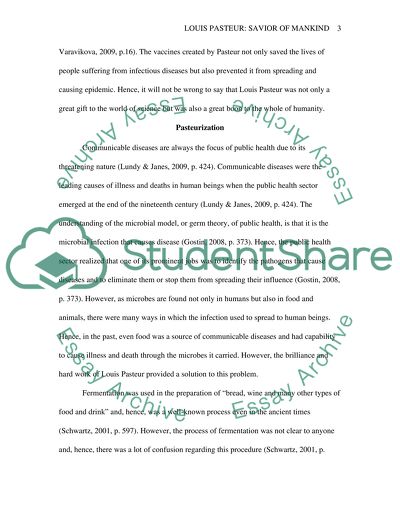Cite this document
(“Louis Pasteur: Savior of Mankind Essay Example | Topics and Well Written Essays - 1750 words”, n.d.)
Retrieved from https://studentshare.org/health-sciences-medicine/1443165-louis-pasteur
Retrieved from https://studentshare.org/health-sciences-medicine/1443165-louis-pasteur
(Louis Pasteur: Savior of Mankind Essay Example | Topics and Well Written Essays - 1750 Words)
https://studentshare.org/health-sciences-medicine/1443165-louis-pasteur.
https://studentshare.org/health-sciences-medicine/1443165-louis-pasteur.
“Louis Pasteur: Savior of Mankind Essay Example | Topics and Well Written Essays - 1750 Words”, n.d. https://studentshare.org/health-sciences-medicine/1443165-louis-pasteur.


